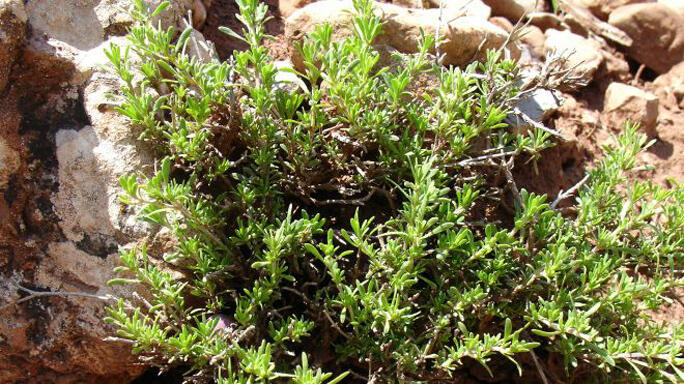Common Name
Botanical Name
The winter cold season brings with it various miseries – including bronchitis, an inflammation of the bronchial tubes or bronchi.
These medium and large sized passageways carry air from the trachea to the lungs, and when they become inflamed – typically as a result of either a cold or flu – the result is acute bronchitis. Chronic or persistent bronchitis is most often caused by cigarette smoking or inhalation of other toxins that irritate air passageways. For our purposes here, acute bronchitis brought about by cold or flu is in the spotlight.
Symptoms of acute bronchitis often include sore throat, nasal congestion, shortness of breath, fatigue, runny nose, nasal congestion and low-grade fever. If you’ve had a cold or flu in your lifetime, then the odds are excellent that you’ve also had a bout of acute bronchitis. The reflexive cough that characterizes bronchitis is your body’s attempt to cough out built-up mucus in the lungs. To aid in this effort, we can turn to a very old, yet medically revered, remedy: the common spice thyme.
Known and used during the early Greek and Roman empires, Thyme (Thymus vulgaris) is native to the Mediterranean region. In ancient Greece, thyme was burned as incense in temples. Like the other well-known incenses frankincense and myrrh, thyme’s vapors kill microbes and thereby help to keep not only a fragrant atmosphere, but a healthy one.
In Morocco thyme grows wild in the vast Atlas Mountain range and is hand harvested by traditional Berber people. Their low-impact, non-automated hand harvesting of wild thyme leaves using curved steel blades leaves the plant roots intact – and utilizes a small fraction of wild supply. The herb is also commercially cultivated in France, Spain, Portugal, Greece, the U.S. and other countries.
For medicinal purposes, the leaves of the thyme plant are used. After it has been harvested, the thyme is dried and the leaves are beaten off of their branches. The leaves of thyme contain a broad array of naturally-occurring compounds – including carvacrol, borneol, geraniol, thymol, flavonoids, caffeic acid, labiatic acid, ursolic acid, oleanolic acid, saponins, apigenin, luteolin, and various flavones. Of these, the agent thymol is a common ingredient in mouthwashes, gargles, and toothpastes, due to its anti-microbial activity.
Throughout the centuries, herbalists have employed thyme and thyme preparations to relieve chest and respiratory disorders, coughs, colds, and bronchitis. The herb is antibacterial, antifungal and spasmolytic, so it fights agents that cause bronchitis and helps to quell a spasmodic cough. It is also a first-rate expectorant, aiding the body to eliminate accumulated mucus.
In herbal cough syrups and cough drops, you will typically find natural thyme extract. The very popular Ricola brand uses natural thyme, and you can also find thyme tea from brands like Celebration Herbals and others. For relieving acute bronchitis, you can also purchase plain thyme herb and make tea with it the same way you would with peppermint. In fact, mixing thyme and peppermint together helps to soothe a bronchitis cough. If you are going to make thyme tea, use abut a teaspoon of leaves in a tea ball. Put the tea ball into a cup, pour freshly boiled water over it, and let it steep for about five minutes. Then remove the tea ball, add a bit of honey to provide further soothing activity – and drink.
There are no known negative interactions with thyme and any drugs, and there are no contraindications for use of thyme during pregnancy or lactation. A gentle yet effective age-old remedy, thyme has the capacity to help soothe irritated bronchial tubes, kill microbes that cause bronchitis, aid the expectoration of accumulated mucus, and get you on the road to wellness.


